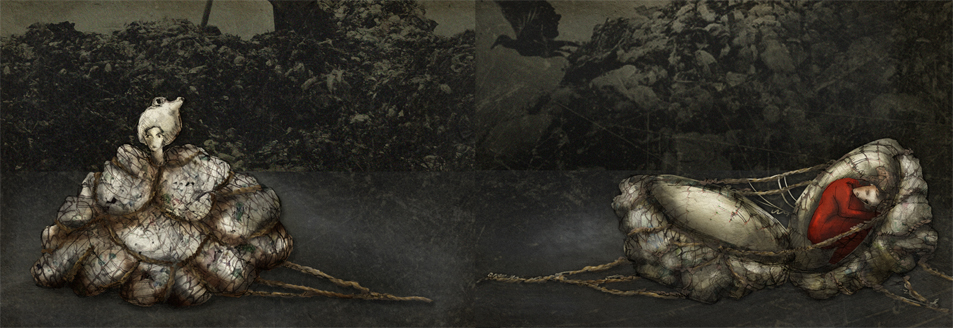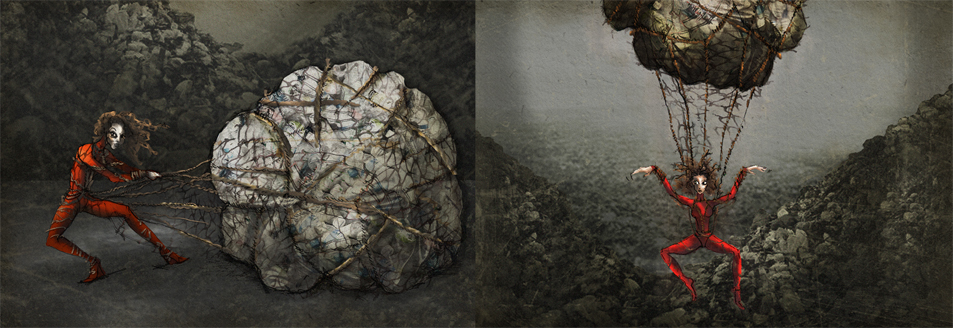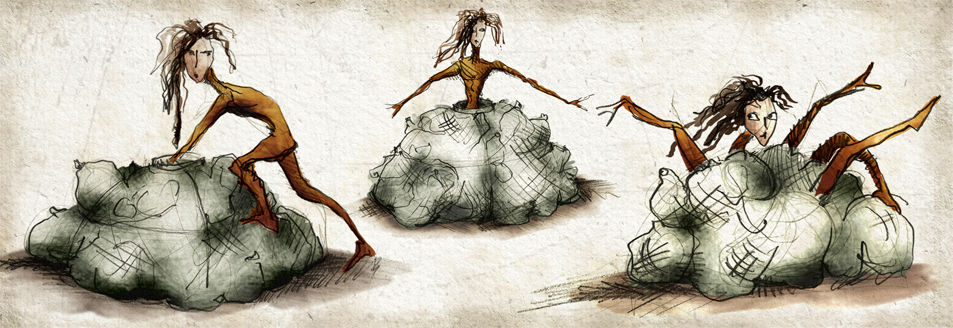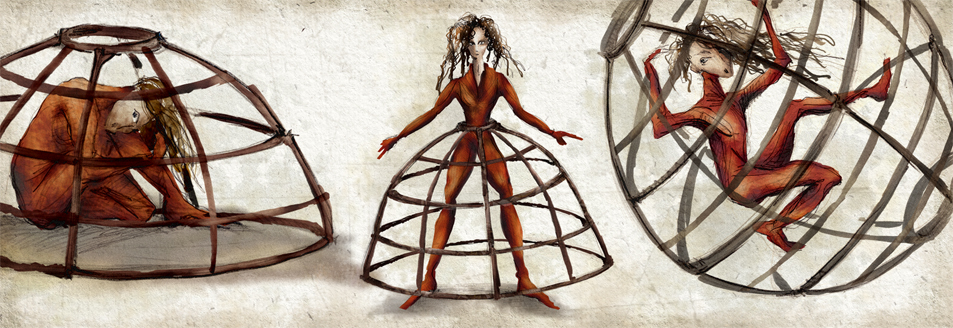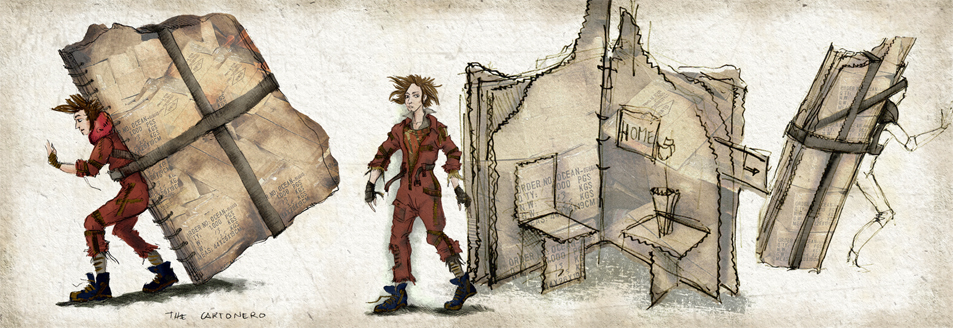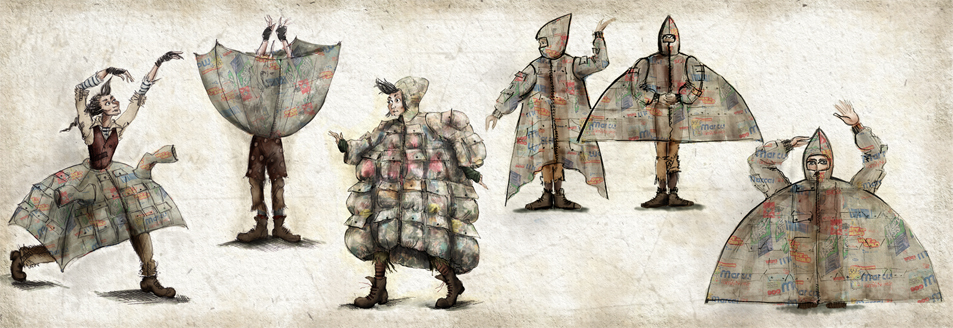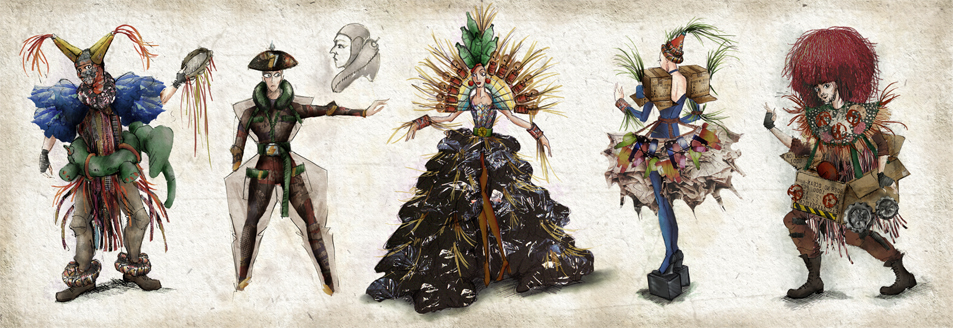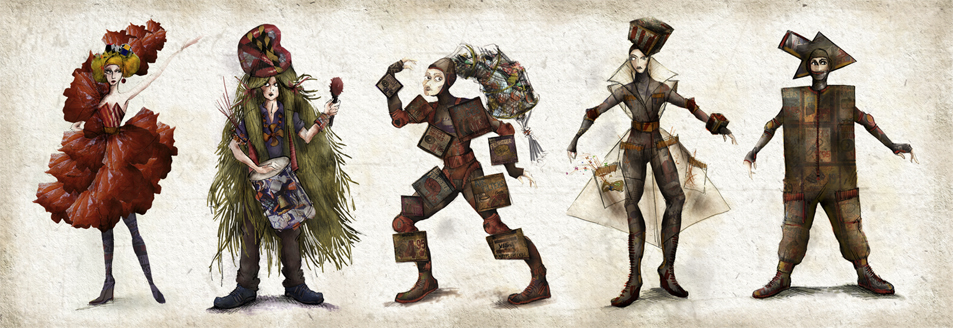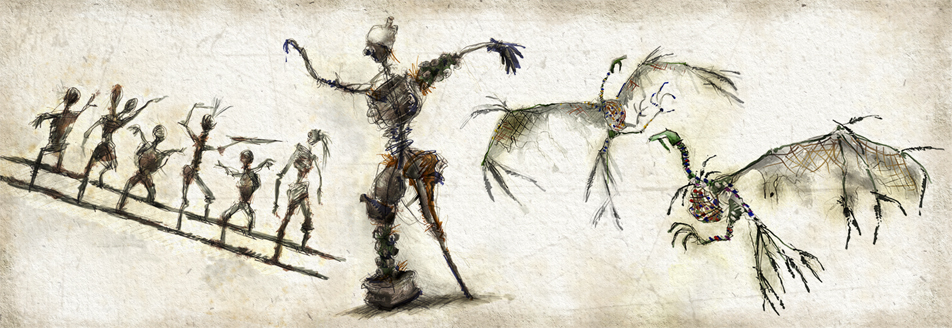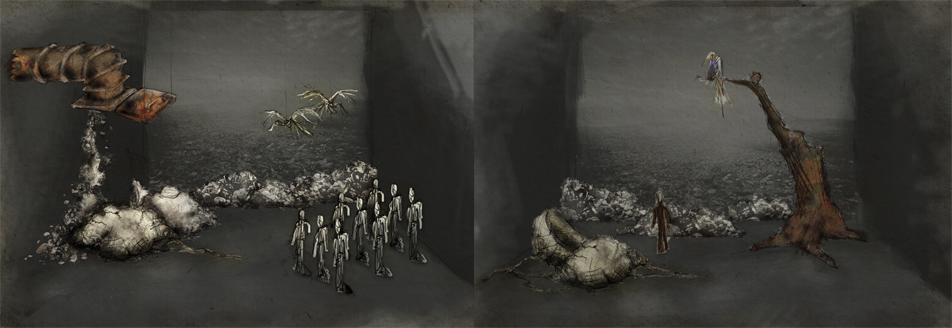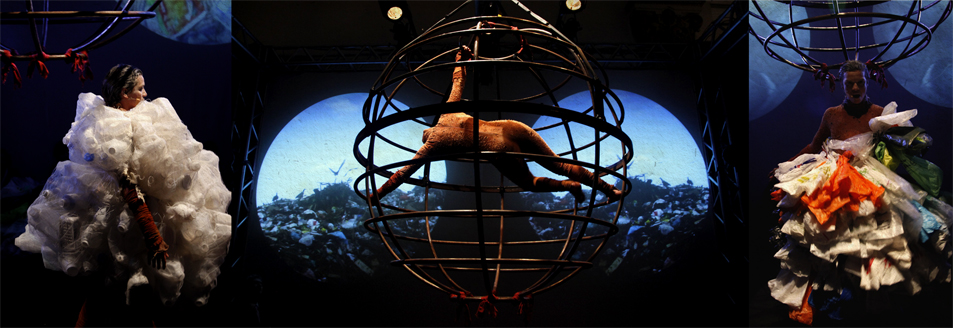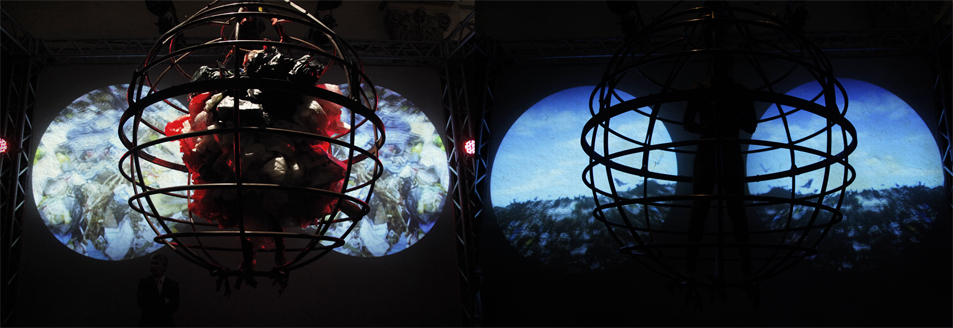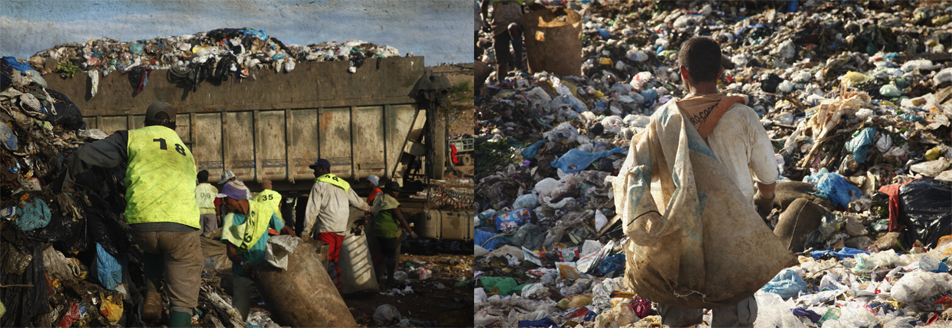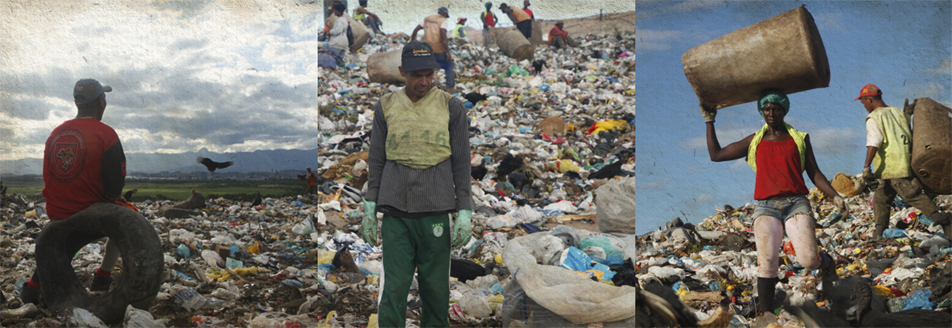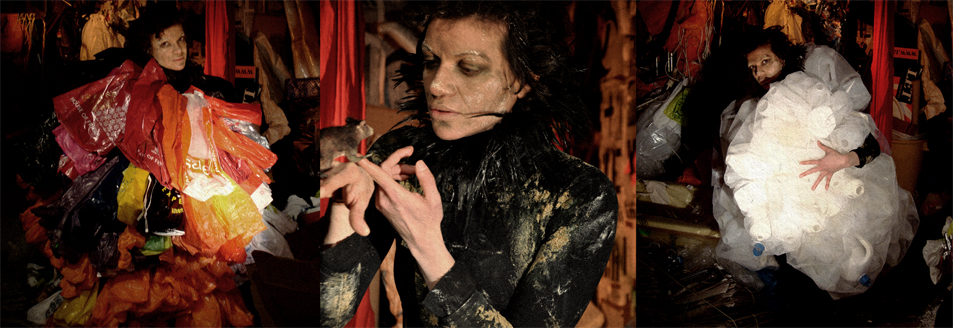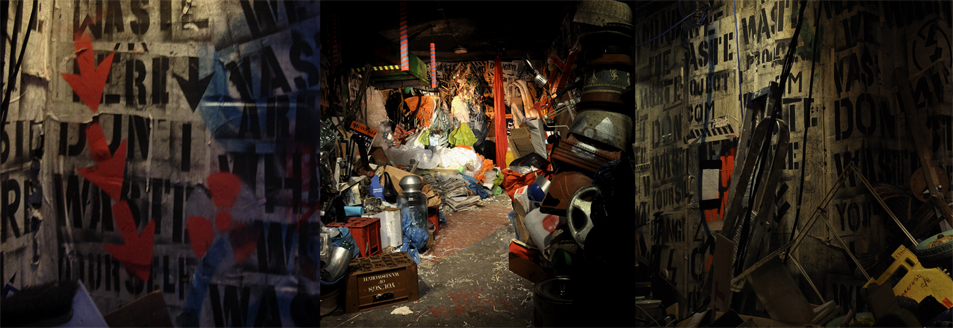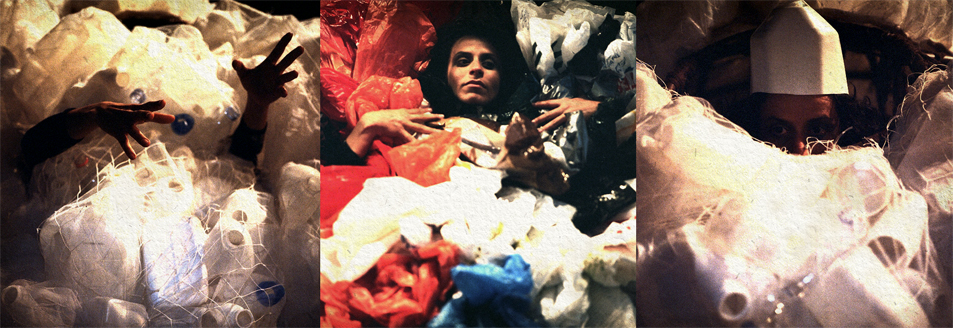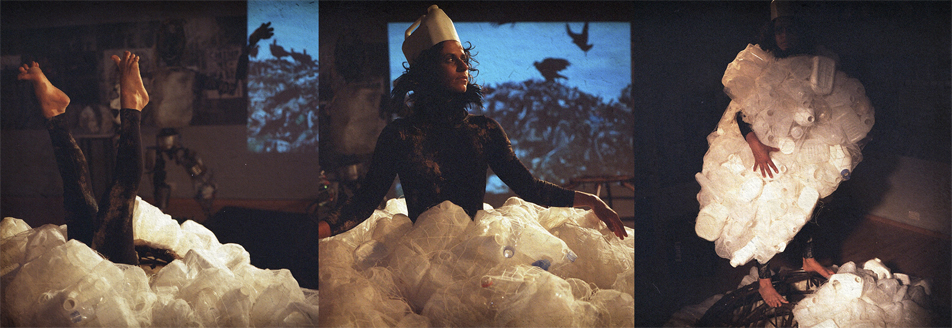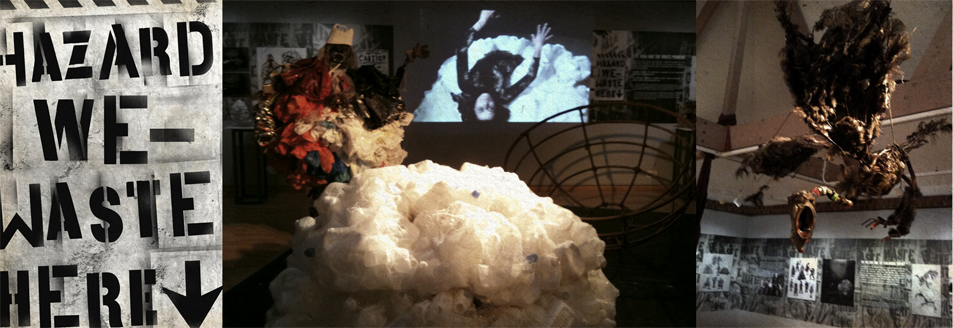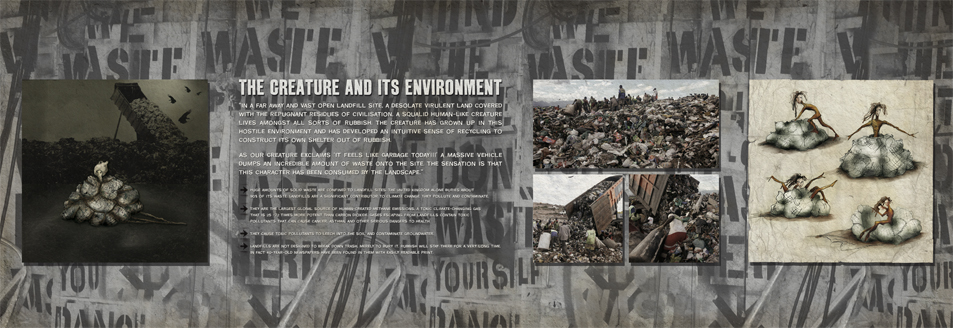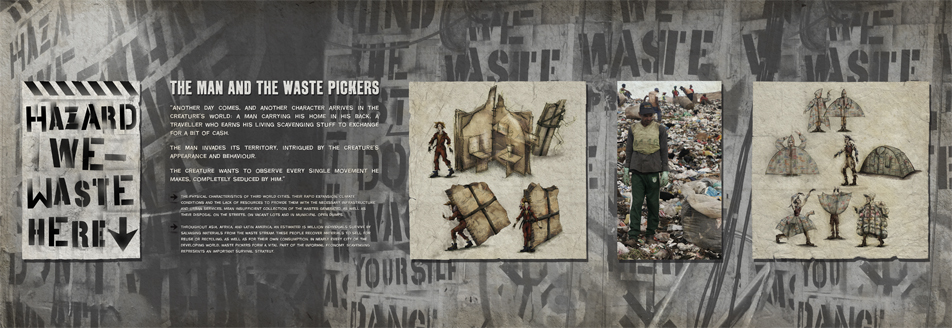We-Waste
An introduction
The We-Waste project began when artist Beo Da Silva and I got together to talk rubbish. Garbage. Waste. We wondered about our relationship with it. As we spoke more, a lonely creature in a vast world of waste started to emerge from my imagination.
Over three years, we mixed performance, installation, photography, poetry and video. From January 2014, the We-Waste project will be available as an illustrated book.
The performances and their challenges
The costumes and props were elaborate. They needed to look natural – like a waste creation would wear them. But be made entirely of waste. Versatility was key. We doubled them up, so costumes became props and props costumes. Like the man with the pop-up house in his back. And the other with a tent that turned into a coat.
Rio Cena Internacional, Rio de Janeiro (2012)
We hoisted our metal structures in the air for the first time. And installed Anomalous Visuals’ video in the background, which featured photography from Fernando Filho taken in the world’s largest landfill site, Jardin Gramacho in Rio. Music came from Steven Barrymen and was composed just for this project.
It wasn’t easy. We had to create a complete performance in a new space in a short amount of time. But it was a success. My experimental plastic-bottles coat and plastic-bag dress had a fantastic impact under the wonderful lighting of Renato Machado.
The Market Estate, Camden, London (2010)
The Market Estate took place in a 1960s housing estate in London just before it was demolished. Over 75 artists got involved. We installed and performed We-Waste in the waste disposal area, to the delight of our visitors.
Over several months, I’d collected a huge amount of materials. Recycled as fashion, it created a political statement and new aesthetic of costumes.
Riverhouse Gallery, London (2010)
Just after the Market Estate event, Riverhouse Gallery commissioned me to create an educational exhibition about We-Waste. For a month, children from local schools visited and took part in special activities.
We explored the connections between our creations and waste in our lives. Like its impact on the environment. We used images of workers from Jardin Gramacho to illustrate waste disposal problems.
Eduardo Lima and MinaLima Studios helped design educational displays and spark debate.
Peter Scoll, chairman of Riverhouse Gallery, said:
‘From 7 July to 1 August 2010, we had the privilege of mounting one of the most imaginative and exciting shows we have ever put on. Mauricio Carneiro’s We-Waste project introduced us to a cast of characters making their living in and on an open landfill site. In a most thoughtful and moving way we were touched by the outsiders who make their homes, clothes and income from the material discarded by mainstream society.
‘To accompany the drawings and photographs, Mauricio installed eye-catching manikins of recycled materials and also pieces of sculpture. In addition, for those of us privileged to see it, his collaborator, Beo Da Silva, gave a powerful and acrobatic piece of performance art where she assumed the physical form of the characters and of the tip itself, even down to the rats that infest it!’
Installations
We wanted visitors to enjoy new experiences when they visited We-Waste. So we sparked performances in the middle of the exhibition.
Rio Cena 2012 was our biggest and most atmospheric. But putting We-Waste in a real waste area on a London estate was most realistic. You could even smell the rubbish that had been there in the past.
* copyright images mauricio carneiro
* photos by fernando filho, scumeck sabottka, rosie goodwin
